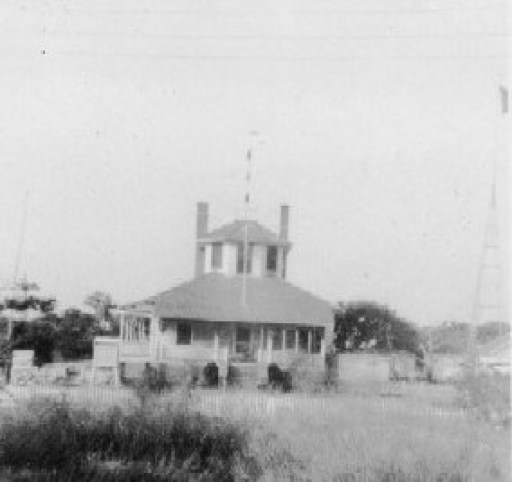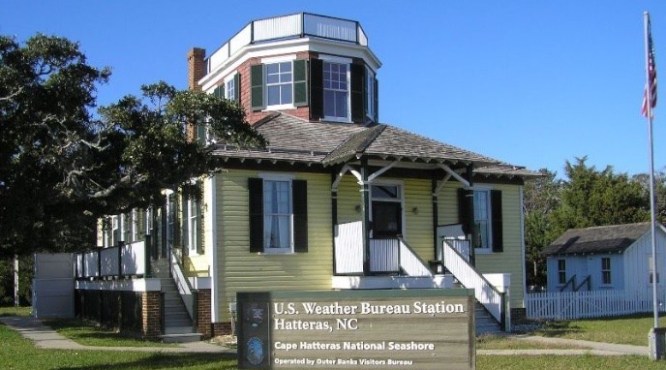
Weather is a huge part of life on the islands on the edge, especially on days like Thursday when a nor’easter brought high winds, high surf and caused the ferries to suspend service.
Ocracoke is the last island of the Outer Banks. Its immediate neighbor to the north, Cape Hatteras–where the Gulf Stream and Labrador Current meet–has been an important location for weather forecasting for the last 140 plus years.
People who lived on the Outer Banks received their news by boat or through word of mouth. Residents of isolated Portsmouth and Ocracoke Islands got word of an approaching storm in sealed tubes dropped from airplanes.
Since Cape Hatteras, a major shipping route, was also a common place for shipwrecks, the Weather Bureau felt that the need to have a main station on the North Carolina coast was important enough for them to build one in Hatteras Village.
The first U.S. Weather Bureau Station, managed by the Army Signal Services on Hatteras Island, was established at the Cape Hatteras Lighthouse Keepers’ Quarters in 1874.
It moved to the Hatteras Life-Saving Station on Dec. 1, 1880, and later transferred to a Hatteras Village private residence known as Styron’s Building, on Oct. 1, 1883.

Life Magazine photo
A few years later, the Weather Bureau built a structure for the station in Hatteras Village for the sum of $250. The official Hatteras Weather Bureau Station was commissioned and occupied on Jan. 1, 1902.
Lucy Stowe, who died at the age of 83 in November 2008, was one of a few women who worked as weather “observers” in Hatteras. She was hired at the age of 18 in 1943 as a junior weather observer for the Hatteras Station.
In the early 1940s, Weather Bureau office staffs were composed entirely of men. In 1941, only two women were listed in the observer and forecaster ranks.
This staffing ratio was changed dramatically during World War II. By 1945, more than 900 women were working as Weather Bureau observers and forecasters, filling positions vacated by men called to duty. For many of the women this was temporary, war-time employment. For some, like Lucy, it was a career.
Lucy’s career track started in a one-room Hatteras weather office in a Victorian-style wooden structure with a few tables, a teletype and basic weather instruments.
She retired in 1980 from a “stormproof,” reinforced concrete weather building in Buxton complete with weather radar, computerized instrumentation and data networking, and from a service that made forecasts using weather satellites and computerized numeric models.
Lucy, like other local weather employees, could be recognized throughout Hatteras Island just by her voice after years of NOAA weather radio broadcasting.
Although the National Weather Service no longer staffs an office on Hatteras Island, locals still stay closely tuned to NOAA advisories and warnings.
Weather can turn quickly here, since, as Lucy said, “This is a weather breeding area.”



